Solstices and equinoxes feel significant to me. Much of my work is about light and the perception of light, and I enjoy marking these occasions by making prints using the available sunlight for exposure.
For this solstice, I started with a large print on cotton sateen, using the wet cyanotype method with just a small amount of Solarfast solar dye. I used leaves I had pressed and dried in the summer, including sumac, sassafras, oak, and white mulberry. I trialed them first on the plain fabric, treated it, arranged the leaves, and covered them with sheet roll plastic.
I have long experience making prints under less than ideal circumstances. For this winter solstice I got lucky, and the daytime temperatures were above freezing and there was a bit of slanting sunlight. Still, prints need long exposures in winter, and I left this one out for about 24 hours.
Next up was another large print on sateen, with long twigs of sumac and white mulberry. I left this one exposed for about 8 hours.
Next I tried making oak leaf prints on mineral paper. To the best of my recollection, I hadn't tried this in winter before, and I was curious to see how it would work.
Because prints can be slower to "strike" on mineral paper, I left these two out for 24 hours.
And last but not least, a fern print, as I never tire of these. The fronds were fresh, from a Christmas fern, and the sateen had been previously treated, dried, and stored.
Here are the prints in the interims stage, after printing but before rinsing and finishing. The 24 hour print looked very intriguing at this stage.
And here's the 8 hour print. I knew from experience that most of that green coloration would rinse out.
The prints on mineral paper were very intense!
But again, I knew that rinse out would be equally intense.
The silk noil print looked dark and murky.And the fern print was very dark.
Time for the results! The first print looks fantastic and I'm very pleased with it.
The 8 hour print also looks great. That slight hint of green is from the Solarfast.
Here's where things got interesting. The vast majority of the cyanotype chemicals rinsed right off of the mineral paper, leaving somewhat ghostly images. The prints are saved by the lovely background markings. And they do look very wintery.
I'm speculating that, even more so than prints on fabric, mineral paper needs the hot sun of summer to produce a striking print. I don't know that I would repeat this trial in cold weather, but I'm always grateful to learn something new when I experiment.
I'm also happy with the fern print. This one is a good example of a phenomenon I've observed before, that cold weather prints can form very dark and saturated backgrounds on cotton.
So that's this year's winter solstice prints! From here on the light will increase a bit each day, as I dream and scheme about my printmaking goals for the summer season.Thanks as always for reading! You can also follow along on your platform of choice:
Facebook page:http://www.facebook.com/suerenostudio
Twitter feed: http://twitter.com/suereno
Tumblr: http://suerenostudio.tumblr.com
Instagram: https://www.instagram.com/sue_reno_studio/
Twitter feed: http://twitter.com/suereno
Tumblr: http://suerenostudio.tumblr.com
Instagram: https://www.instagram.com/sue_reno_studio/





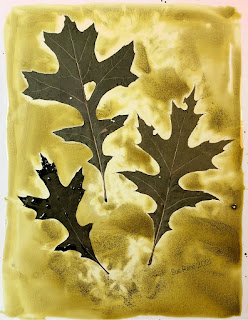
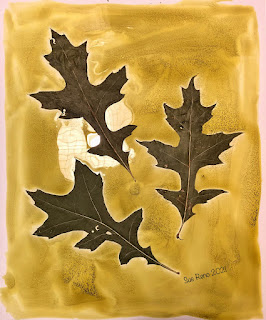


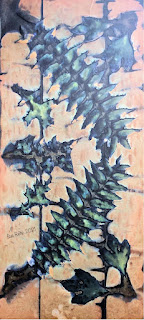
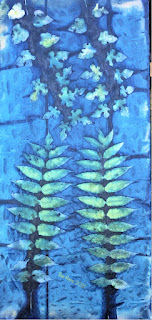


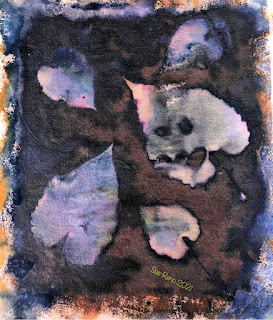
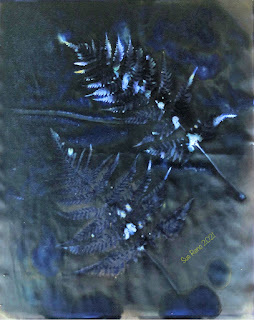
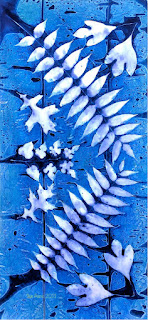


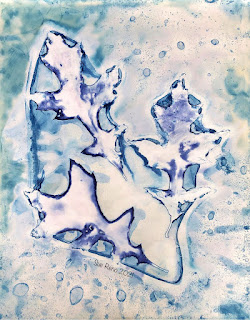

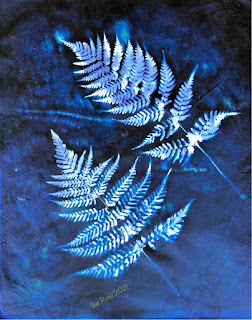
3 comments:
I love following our posts. I always learn something, and you save me the frustration of trying some of the same things that sort work. I'm loving the miners paper, playing with acrylic inks. I also bought a relatively inexpensive UV light and love the I can get some reproducible results. I was making some prints for a friend who wanted multiples of similar images.
It is cold and blustery here today, but the sun is out, so all is good. Thanks so much for all you enthusiastically share.
Thank you for sharing,
Comment moderation has been wonky, so apologies if I was late in getting to yours. Susan, I’m so glad this has been useful for you. Michael, you are very welcome!
Post a Comment